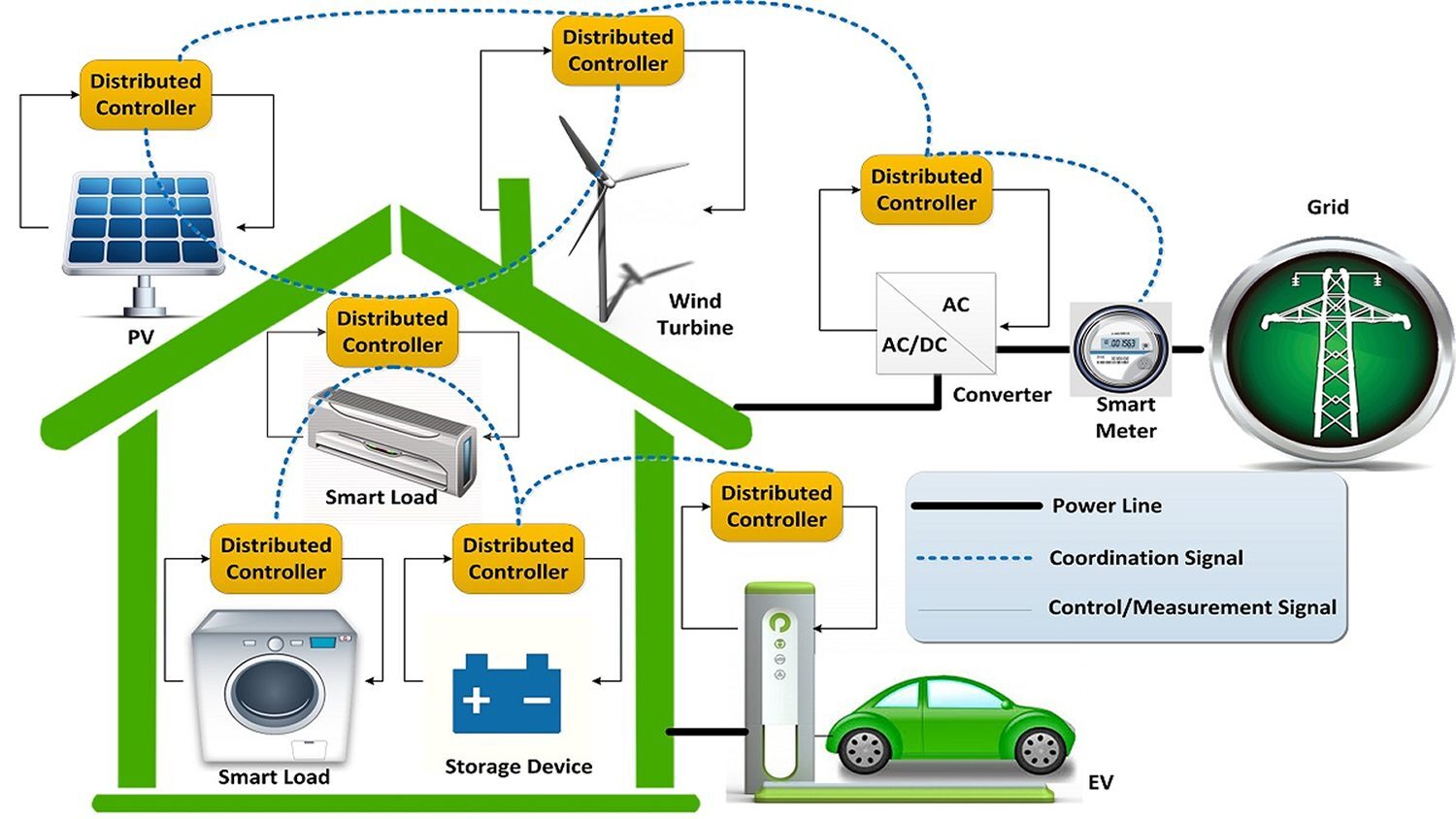Knowing what solar system is best for you and your home comes down to a multitude of factors, examples being; your energy consumption, when and how you consume energy, your energy provider and their rates and even where you live. Due to these many factors it can be hard to fully understand what solar system is best for you. To fully understand your energy consumption and how best to control it, an option to consider could be home energy management systems.
So, how do they work?
Home energy management systems (often referred to as HEMS or EMS) are as the name states, systems which manage and track home energy use and consumption. They allow the user to monitor their past and present energy consumption, while also allowing the user to control appliances and devices attached to the system so that you are using power during off-peak or shoulder periods and are therefore paying less on your energy bill. Additionally, HEMS allow users the benefit of having control of their intensive loads while also offering the user the ability to personalise their power consumption to their needs.
See our comparison of the different HEMS available in Australia.
HEMS are comprised of two main components;
- Hardware – usually includes a mechanism that is attached to an electrical board that acts as a link between the user and the devices and appliances connected in the home and in some cases the utility retailer. The other option is having a virtual device which is setup through a wireless network.
- Software – this is what moderates and communicates all the information and data of the connected devices and appliances. The software’s two main functions are to monitor and control the energy consumption. The software’s interface is how the user can monitor and control their system, this being achieved through an app or web portal.
-
- Monitoring: different systems allow different monitoring capabilities, but what most monitoring systems allow is for the user to receive feedback on how their energy is being used or generated. You’ll receive information on past and present energy use; some will even show you your usage trends. Many systems will allow you to see what appliances are on/off and even individual consumption rates for each appliance. Depending on the device you might be able to monitor your home, solar and battery consumption all on the same system.
- Control: allows users to manage their systems remotely via an app or if preferred, through a time schedule system where the appliances will be set up to run during specific hours. Similarly to the monitoring section, control functions are based on the HEMS device capabilities and may allow users to set appliances and devices to run at specific times, set appliances and devices to run during certain situations – like when temperatures reach a certain degree, the ability to manage and optimise the usage of energy from solar, batteries or generators or the more the simple function, enable the user to turn devices on and off.
Compare quotes from up to 7 installers in your area now.
Why use a Home Energy Management System?
Home energy management systems are a great way to reduce your energy consumption and therefore your energy bill. For this to occur users will have to know when off-peak and shoulder usage rates are to get the most out of their systems and this requires research and time.
Benefits of HEMS:
- If monitored and controlled correctly, long-term savings can be achieved through energy consumption optimisation, by managing the HEMS device’s delivered results and resulting feedback
- Scheduling time-based appliance operations to coincide with off-peak and time-of-use energy consumption
- Peace of mind as users are able to monitor and control their homes energy consumption externally
- The ability to work alongside solar and battery systems to further optimise energy consumption, allowing the user to remotely control when devices and appliances are switched on to consume the solar/battery energy
Cons of HEMS:
- Systems are still quite expensive, especially the installation costs and advanced smart home systems
- HEMS require continuous management and monitoring to gain the most benefit which is time consuming and also requires dedication
- Concerns for the security of the home as monitoring and control of the device is done through an online portal and therefore potential for the system to be infiltrated
Integrating HEMS with Solar and Battery Systems
As stated above, managing and utilising a home energy management system allows for the potential for optimised energy consumption, leading to energy bill saving. Pairing HEMS with a solar system can further reduce your energy bills, by turning devices on when the solar panels are receiving sunlight, making sure to consume the energy at the most appropriate times. Smart HEMS will be able to schedule appliances to operate based on whether panels are receiving any sunlight, the capacity of the battery and even the time-of-use tariffs for electricity from the grid.
Compare quotes from up to 7 pre-vetted installers in your area now.
Since 2008 our knowledge and sophisticated software has allowed over 160,000 Australian households and businesses to make a well-informed choice on their solar & battery installer.
Useful Links:
https://sustainable-now.eu/guide-to-home-energy-management-systems/
https://carbontrack.com.au/blog/what-is-a-home-energy-management-system/
https://www.energylens.com/articles/energy-management
Top Image credit engineeringonline.ncsu.edu
- Solar Panel Costs: Solar Choice Price Index | April 2025 - 1 April, 2025
- Solar Panels For Homes – All You Need to Know About Solar Systems - 18 March, 2025
- Best NSW Solar Feed-In Tariffs - 17 March, 2025
